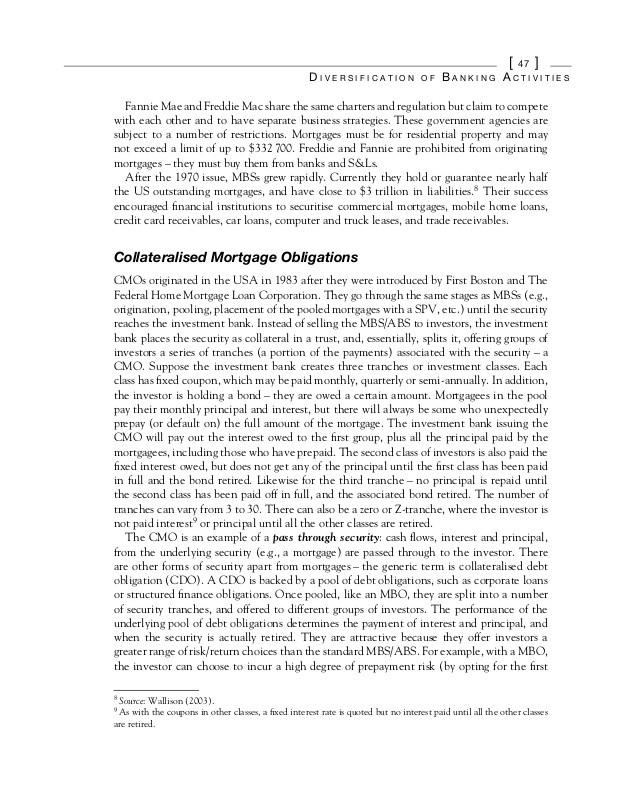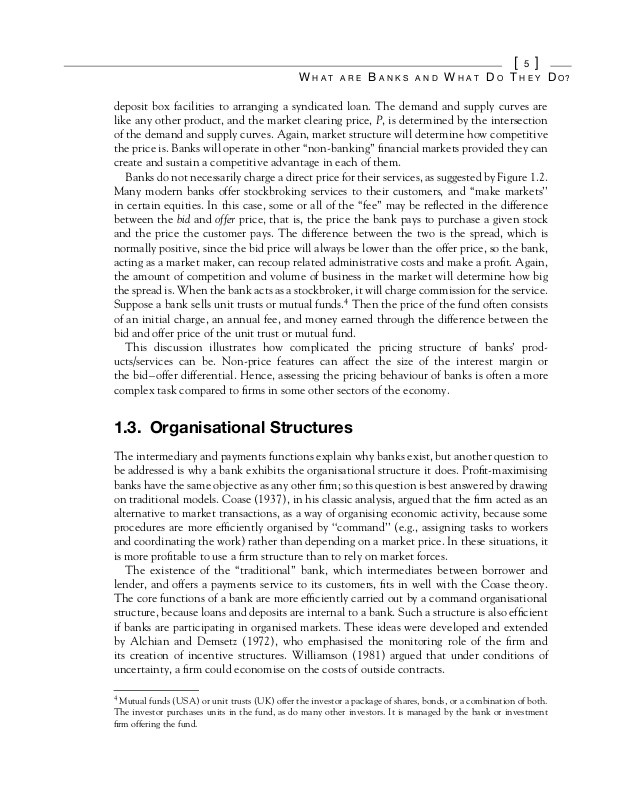How To Destroy the British Banking System – Regulatory Arbitrage via ‘Pig on Pork’ Derivatives
Post on: 6 Август, 2015 No Comment

By Gordon Kerr, on 21 January 10
Financial engineer Gordon Kerr explains how to destroy the British banking system through the use of derivatives which take advantage of the regulatory system, then sets out four measures to solve the problem.
Nine years ago I worked as a structuring engineer in a three-man team within the investment banking unit of a major British bank. One of us was very bright. He stunned me one day with an idea as to how we could:
- Produce immediate (but illusory) substantial profits for our bank, thus ensuring that we would enjoy generous personal remuneration;
- Generate ‘virtual’ share capital to boost our bank’s capital reserves;
- Leave the actual investment risk exposure and profit expectation of our bank almost exactly the same after the transaction as before it.
Was this idea the kind of rocket science derivative engineering that justifies master of the universe labels for the three of us who designed and implemented it? No: it was extremely simple. Here’s how it worked. We transmuted some loan assets into a derivative transaction for regulatory purposes, whilst leaving the actual loan arrangements unaltered.
The bank for whom we worked owned a substantial (about $4 billion) portfolio of a certain category of bonds. These underlying bonds displayed the alphabet soup characteristics about which you will have read much in the past 12 months.
Did any of our bank’s staff or senior management understand the risks underlying these bonds? I doubt it, and for one crucial reason they saw no such need. Nobody really cared what letters were swimming around in the soup those days because the bonds were rated by the revered US rating agencies. The power and influence of these agencies has barely been dented by the banking crisis. Provided that a bond enjoyed the coveted status of an “AAA” rating together with a sufficient yield, it satisfied the investment criteria of most banks. These $4billion of assets attained their AAA ratings because they were guaranteed by major US financial insurance companies.
The UK bank capital rules compelled our bank to allocate 8% of shareholder funds, or $320 million, to this portfolio. We were getting a little short of capital at the time and our bank was about to employ an investment bank to find some for us. But capital is expensive, investors wanted yields of over 12% at the time, and the intermediary’s fees would be substantial.
These plans were cancelled by our solution.
We simply persuaded the guarantor (the US financial insurer) to enter into a credit derivative contract with a European bank. The European Bank wrote a matching credit derivative in favour of our bank. Now here is the complex bit: credit derivatives. Let me explain this term which has generated tomes of analysis in recent years; a ‘credit derivative’ is just a fancy term for a guarantee.
Result of our solution:
US insurer – earned an accommodation fee for the paperwork. Its economic position was unaltered: it was simply guaranteeing the same assets again. Pig on pork.
European Bank – earned an accommodation fee for taking very little exposure. The trick with credit derivatives is to define the circumstances in which they pay out: this is where they differ from guarantees. Here we were careful to ensure that, because the US entity was guaranteeing the assets twice (via the guarantee and derivative), this bank’s derivative would not trigger until our bank had claimed under the guarantee.
Our bank. The effect for our bank was that the assets could be reclassified as derivatives and new loans could be made with the capital ‘freed up’. A side effect was that profits were brought forward. At the cost of minor fees under the accommodation arrangements described above we achieved:
a) Under the accepted derivative capital calculation (I think the formula is A+B-C /Z) derivatives essentially attract a regulatory capital requirement of 0.5% rather than 8%. Our bank could therefore treat this transaction as raising $300 million: 15/16 of the $320 million was released. As demonstrated above, this freeing up of capital was achieved by the introduction of a bank into the loop who took very little risk. The transaction was engineered around the rule, the release of capital was in essence a chimera.
b) Under the ridiculously lax accounting rules that continue to apply to all derivative transactions, rather than recognising the profit on the loans periodically as the loan margin was actually paid, we booked as profit on execution the entire 30 years expected earnings for that part of the lending margin that now flowed through our derivative book.
Point b) above explains why banks who were essentially insolvent only a year ago are booking record profits in 2009; the magic of derivative accounting. This is why I incline to the view that the rescued banks’ shares are probably overvalued since this method of front-end accounting is not widely understood.
None of these rules have to my knowledge changed. Why not? I believe the solutions are beyond the intellectual competence of the regulatory and accounting rulemakers. They do not understand derivatives.
The Rating Agencies and their role in the global banking crisis as the oracles of risk evaluation
When I started my career in the 1980s, it was clear that some of the smartest people in the bank worked in the department that analysed the risk of investments defaulting. However, as the rating agencies grew in influence, the internal bank risk assessment process degenerated towards box-ticking. Bank credit analysts became frustrated. Many transferred to other departments, realising that few managers would ever read their reports.
Why would a senior decision maker of a major bank spend an evening trying to get his head around a complex, sliced-cashflow arrangement with cross-currency swaps and uncertain repayment dates? Why follow the labyrinthine path as expected cash meanders through fifteen mutually-ringfenced project companies who will hopefully build and operate a new hospital, or a scheme to extend the M6 from Carlisle to Scotland? If Standard and Poor’s or Moodys opined that the cashflows were AAA, that was good enough.

Naturally, the bank credit departments remained well-staffed. Bank management had to respect the process of evaluation to satisfy its regulators. However the actual process was very much simplified, the officer had only to look up the official rating and write a memorandum summarising key terms.
By the end of the millennium, I noted a kind of “Peter principle” in play – most of the team were either young graduates cutting their teeth and enjoying the glamour of writing a report that would accompany a multi million pound investment decision, or long-term staffers marking time and awaiting their pensions. I do not demean the individuals many highly intelligent and motivated people worked in these departments: I comment only on the weight their opinions carried as compared to the views of the monolithic rating agencies.
At this time major UK banks such as my employer had a problem. Consider a bank owning £100bn of assets with an average maturity profile of 5 years. In order to maintain the bank’s annual profit level relative to its peers it was necessary to find £20 billion of investments each year at margins comparable with the maturing portfolio.
This was no easy task because the expansion of credit and the consequent liquidity bubble was impacting the market supply/ demand balance. Put simply, lenders operating at every level of the banking market, whose customers were corporates, other financial institutions, SMEs or ordinary consumers, were throwing money at borrowers. It was the banks’ thirst for earnings, combined with increasingly optimistic rating agency economic assumptions (eg – property values always rising even if they suffer periodic downward blips), that drove the emergence of the next phase of the bond structuring industry and oiled the wheels for obligations of unemployed US “sub-prime” borrowers to be classified as virtually riskless investments.
How to protect the taxpayer from further banking system toxicity in the future
What lessons should we learn from the above as we attempt to put the banking system back on its feet post- bailout?
a) Do not rely on the Rating Agencies. A substantial cause of the collapse was the over reliance by regulators and lenders on the rating agencies. The rise of these agencies is an example of market efficiency, but also demonstrates that if the taxpayer is to stand behind the banks then market driven entities are inadequate bank risk assessors. Regulation by market forces will encourage future collapses. Rating agencies are profit driven. When future times are tight they will again slacken their strictures to attract business.
b) Change the banks’ accounting rules for derivatives. These transactions run many decades. Even I, in the pre-bailout world, saw some justification for taking profits up front (subject to minor reserving) given the ‘undoubted’ standing of the banks who were our contractual counterparts. But in the post-bailout world the argument is risible.
c) Shrink the regulators. The larger the teams, the weaker the regulation. Cultures and empires develop. It becomes even more dangerous to be right when the boss is wrong. Manners and culture are more important than perspicacity. To quote Voltaire:
To succeed in the world it is not enough to be stupid, you must also be well-mannered.
d) Adopt the author’s radical idea for a new regulatory regime. Employ say 10 top bankers, 2 for each of the 5 major sectors of the UK banking industry, and give them access to a research pool to do the legwork. Pay each of the top men salaries of £2 – 5 million per annum, with 90 per cent of this deferred for 5 years or more subject to a rolling solvency test on the banks they regulate. If after 5 years there is any doubt as to whether the regulated entity meets the standard required to release the deferred compensation test, defer 90 per cent again for a further 5 years.
Conclusion
As soon as the structure described above was executed it was widely copied and I knew that a global banking collapse was imminent. My only surprise was that the bubble continued to inflate for a further 8 years.
The regulators of the banking industry have to improve. Is this generalised statement too strong? I fear not, for the following reason. Regulators still continue to make rules only after consultation with, and input from, bankers.
If the average regulator is paid £70k per annum, and the market rate for bankers with the skills described above even in October 2009 is £500,000. whose interests do you think will be best protected after the rules currently being designed by Lord Turner’s team are produced? Will the interests of the taxpayer or the banker prevail?
Gordon Kerr is a structured finance banker and founder of www.cobdenpartners.co.uk . the commercial wing of the Cobden Centre. | Contact us














